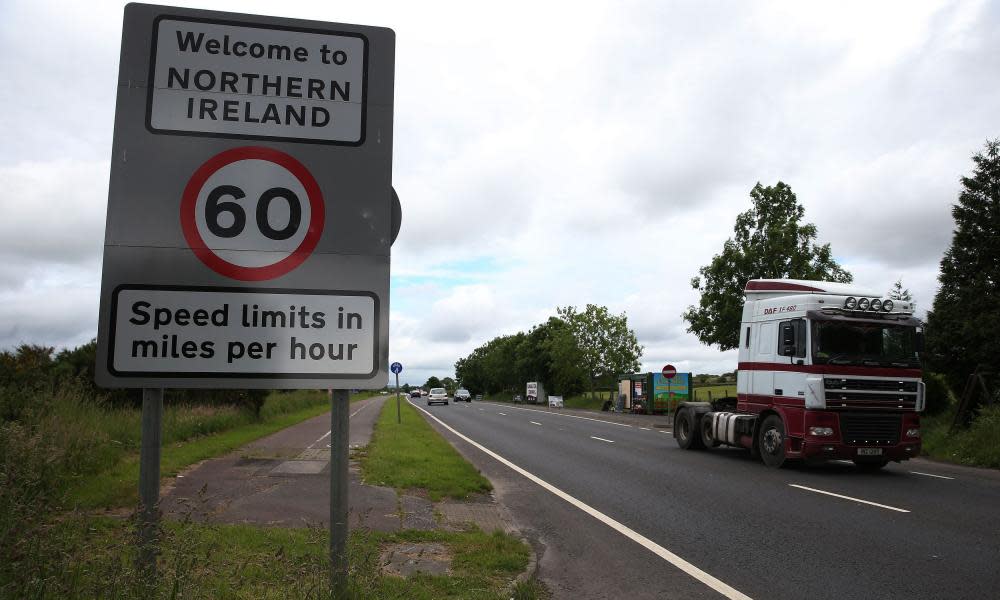EU approval of Brexit blueprint comes with Irish border warning

EU agreement on the terms of a transition period and its vision of a “wide-ranging and ambitious” free trade deal with the UK has come with a warning that nothing will be sealed until Downing Street provides a solution for avoiding a hard border on the island of Ireland.
The leaders of 27 member states endorsed a seven-page blueprint for a future deal with the UK at a summit in Brussels on Friday morning. It includes zero tariffs on goods, reciprocal access to fishing waters and cooperation in defence and foreign affairs.
Progress on a draft withdrawal agreement unveiled earlier in the week was also welcomed by the 27. The 129-page document contains both the terms of the transition period and Brussels’ proposed solution to the issue of the Irish border, which is being contested by the UK because it would effectively keep Northern Ireland in the customs union and single market.
However, the 27 insisted in their guidelines on the future trade deal that negotiations could only progress once the UK provides a legally watertight alternative to its “backstop” solution of keeping Northern Ireland in regulatory alignment with the EU.
That default status for the country would come into effect should a future trade deal or bespoke technological solution not emerge that can do the work of avoiding a hard border with the Irish Republic.
The Irish prime minister, Leo Varadkar, said the deadline for having a “done and dusted” agreement was October, although Dublin was pressing for answers from London on how it would avoid a hard border by the next European council summit in June.
Varadkar claimed the UK had made a significant move in the last week by accepting the premise of a backstop option.
It had initially rejected it “out of hand”, he said, but had now said it would “engage on the text of the backstop that the EU has put forward”.
Varadkar added: “It’s not a case of when they’re winning we’re losing, and when we’re winning they’re losing.”
As she left the leaders’ summit in Brussels, Theresa May said she believed there was a “new dynamic” to the negotiations, and reiterated her commitment to offer answers on the Irish border.
”I welcome the fact that the EU council has agreed the details of the implementation period,” she said. “This gives certainty to people and businesses, it gives them the clarity to plan for their future and it ensures that they will only have to make one change when we enter into our future relationship.
“I believe there is a new dynamic now in the negotiations. We are approaching this with a spirit of cooperation and a spirit of opportunity for the future. We will now be sitting down and determining those workable solutions for Northern Ireland, but also for our future security partnership and economic partnership.”
Negotiators on both sides believe a trade deal can be drawn up during the 21-month transition period that will come into force after 29 March 2019.
However, Philippe Lamberts, a Belgian MEP who co-leads the Green group, voiced scepticism shared by some European diplomats in private. “Who can believe that within 21 months you can complete and then ratify a full association agreement,” he told the Guardian. “That is impossible.”
Lamberts said he expected the EU to make provision in the withdrawal agreement to extend the transition, but “they want to extract a price for that concession”.

 Yahoo News
Yahoo News 
